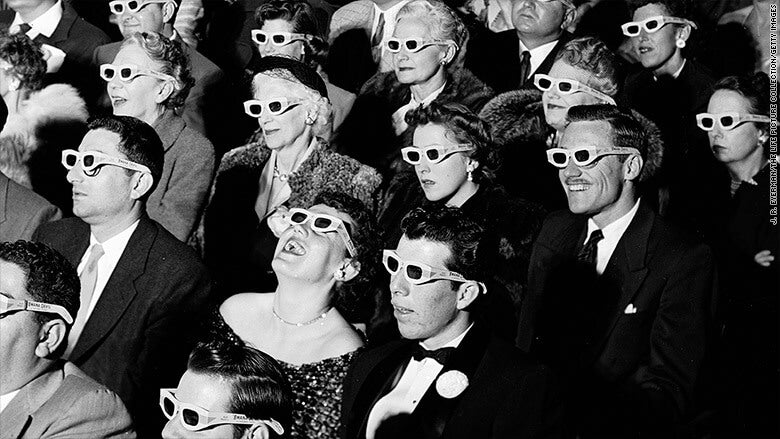
While most people think that 3D movies are an invention of the last 40 or 50 years, it may surprise you to know that the first 3D movie came out in 1922. Since then, 3D technology has been in and out of the mainstream every few years. The biggest advance in 3D popularity was brought about due to James Cameron’s Avatar film. With the explosion of popularity in the 21st century, it looks like 3D technology is here to stay, with nearly every movie available to view in both digital and 3D in most theaters.
You may have seen a 3D in theaters and even watched 3D on your television at home, but do you know how 3D glasses work? There are a few different types of 3D glasses that work in tandem with projection to present you with an amazing visual display. Read on here to learn more from your friends at Rainbow Symphony!
How Do 3D Glasses Work
There are generally three types of 3D glasses including anaglyph, polarized, and shutter. Each uses different methods to bring flat images on your screen to life.
How Do Anaglyph 3D Glasses Work?

These are the most common types of 3D glasses and the iconic image many think about when they wonder how 3D glasses work. These glasses utilize special red / cyan lenses to interpret the image. These lenses produce the images you see by color filtering the layered image that you’re actually looking at. While one lens filters out all the red in an image, the other lense filters out the cyan, causing your brain to see the picture in 3D. The image you’re looking at is usually the same image projected from two different angles — or two entirely different superimposed images.
Anaglyph glasses come in several variations on the red / blue lens including:
- Magenta / Green
- Red / Green
- Red / Cyan
How Do Polarized 3D Glasses Work?

How 3D glasses work when it comes to polarized lenses depends on deceiving your eyes just like anaglyph glasses do. How do polarized 3D glasses work, you ask? They restrict the light that enters your eyes, but instead of restricting the light by red and blue colors, they have a yellowish brown tint.
The image on the screen also has a role to play. In addition to the polarization on the glasses, the projected image is actually two images that are superimposed on the same screen through a orthogonal polarizing filter. Then the glasses, which have the same type of filter, allow each eye to see a the two individual images on the screen.
These glasses are actually the optimal choice for IMAX 3D movies and they’re the grey lens glasses you normally get at the theater today.
How Do Shutter 3D Glasses Work?

Shutter glasses are considered the most advanced type of 3D glasses available today. While the other two types of 3D glasses use something called passive 3D, shutter glasses utilize active 3D. They don’t use filtered image or color to create a three dimensional effect. Instead, shutter glasses work through LCD screen technology that darkens each lens, alternating the left and the right. The lens darkening happens so quickly that you don’t notice the effect unless you’re paying close attention.
Shutter glasses are usually battery powered, or even USB-supported, and are more expensive than traditional 3D glasses. The cost of these glasses make a huge difference to the image quality. You can get shutter glasses from Samsung, Panasonic, Sony, and more.
Why Do 3D Glasses Work?

How 3D glasses work depends solely on how the eyes work and communicate with your brain. Human eyes have binocular vision that works best when you use both eyes simultaneously. Binocular vision gives you depth perception and allows you to tell which objects in your line of sight are closer or farther away.
Binocular vision relies on the distance between your eyes to present you with two different perspectives on the same thing. The distance between your eyes is generally about two inches apart, so the images each eye presents help to build a complete picture.
How Do 3D Glasses Work with Binocular Vision?
All types of 3D glasses work by making each eye see two different things. Whether it’s one eye seeing a red image and the other eye seeing a blue one or lenses that alternate darkening and lightening, your eyes seeing different things trick your brain into interpreting them in spectacular 3D.
3D Glasses at Rainbow Symphony

Now that you know a little more about how 3D glasses work, we hope you’ll enjoy using them even more. Part of the reason we know so much about 3D glasses is because we design and manufacture so many different styles. From custom frames to a variety of colored lenses, Rainbow Symphony can offer you a massive selection of products. Whether you’re hosting a large event or you want to spend a night at home with friends and family watching 3D movies or playing video games, we can help.
Learn more about 3D glasses, rainbows, and solar phenomena when you stay up to date with our blog!



